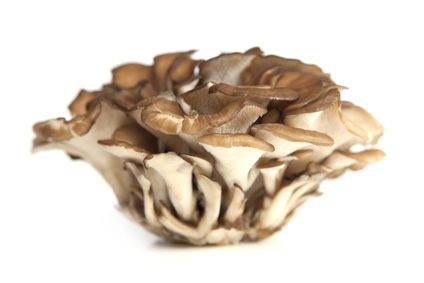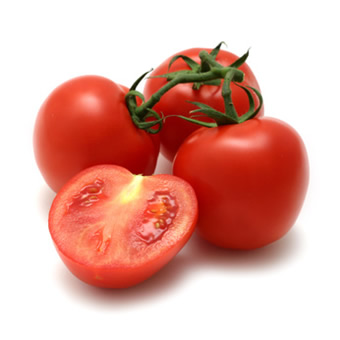Magnesium is referred to as the “anti stress” mineral. It is responsible for over 300 essential metabolic reactions in the body. Magnesium is essential as a cofactor in the synthesis of RNA from DNA. Is a dietary mineral that helps regulate blood vessel size, serotonin function, and nerve activity in the brain, among other effects. Allows nerves to send messages in the brain and nervous system. Helps keep blood pressure normal, bones strong, and the heartrhythm steady. This mineral, is your key to insulin sensitivity and blood pressure regulation, and magnesium deficiency is common in people with diabetes. Also can help prevent leg cramps, migraines and fatigue.
The human body contains about 25 grams of magnesium. Roughly 50% of total body magnesium is stored in our bones. The remaining quantity is predominantly found in the cells of body tissues and organs. Only 1 percent is available in blood. Symptoms of magnesium deficiency; loss of appetite, insomnia, weakness, anxiety, irregular heartbeats, dizziness, shortness of breath, PMS, and poor coordination. Adults require about 310-420 mg of magnesium daily.
What is Migraine?
 Migraine are primarily caused by excessive dilation of blood vessels in the head. Migraine pain occurs when the blood vessels and muscles lining the brain and scalp becomes stretched or tensed. Scientists believe that migraine is the result of fundamental neurological abnormalities caused by genetic mutations at work in the brain. About one in seven adults have migraine, so it is very common. Migraine is three times more common in women than in men.
Migraine are primarily caused by excessive dilation of blood vessels in the head. Migraine pain occurs when the blood vessels and muscles lining the brain and scalp becomes stretched or tensed. Scientists believe that migraine is the result of fundamental neurological abnormalities caused by genetic mutations at work in the brain. About one in seven adults have migraine, so it is very common. Migraine is three times more common in women than in men.
A migraine headache can cause intense throbbing or pulsing in one area of the head. In addition to headache, migraine attacks are often associated with increased sensitivity to environmental stimuli, nausea or vomiting. Many patient experience migraines with auras just before or during the head pain, but most do not.
Migraine attacks last from 4 to 72 hours and are usually felt on one side of the head. During this time you may need to lie down in a quiet and darkened room since the throbbing headache is often made worse by movement, noise and light. Several factors can trigger migraines, including tiredness, stress, hormonal changes, missed or delayed meals, and certain food and drinks, such as cheese, chocolate, coffee, tea and alcohol.
Magnesium and Migraines
Epidemiological findings show that people’s magnesium status is associated with the severity and frequency of migraine headaches, sleep disorders and mood disturbances. Some studies have shown that magnesium depletion plays important role in blood vessel size. Magnesium mineral, relaxes the blood vessels and allows them to dilate, reducing the spasms and constrictions that can cause migraines. Researchers for migraine recommends 200 to 600 mg of magnesium per day.
Some studies show that about half of migraine headache sufferers have a low amount of ionized magnesium in the blood, which suggests a low magnesium status. It seems magnesium concentration affects serotonin receptors, nitric oxide synthesis and release, as well as other migraine-related receptors and neurotransmitters. The available evidence suggests that up to 50% of patients during an acute migraine attack have lowered levels of ionized magnesium. In a study in France, migraine patients were been shown to have significantly lower erythrocyte magnesium levels than controls. Results of a research conducted by the” New York Headache Center” indicate that chronic migraine sufferers have lower magnesium levels in their white and red blood cells than those who do not have migraines.
A few clinical trials suggest that magnesium supplements may shorten the duration of a migraine and reduce the amount of medication needed. In one study, oral magnesium or a placebo were given to 81 people with migraines. At the end of the study, the frequency of migraines was reduced by 41.6 % in the group taking magnesium, compared to 15.8 % in the group taking the placebo. A 2002 study demonstrated that intravenous magnesium helps relieve migraines in patients with or without an aura.
The results of a clinical experiment in 30 people with migraine without aura, published in the June 2008 of Magnesium Research, found that taking 600 milligrams magnesium daily for 12 weeks reduces migraine attack frequency. In a study, a placebo-controlled trial in 86 children with frequent migraine headaches found that oral magnesium reduced headache frequency over the 16-week intervention. Some doctors, suggest combining magnesium with the feverfew along with vitamin B2 may be helpful when you have a headache. Two symptoms of B2 deficiency include eye fatigue and light sensitivity, which are also triggers for and symptoms of migraine headaches.
For those patients with low magnesium levels, acute migraine pain can likely be stopped with a single intravenous magnesium treatment. In a study found that intravenous administration of magnesium sulfate was just as effective in reducing migraine head pain as IV infusion of metoclopramide. The researchers recruited 40 people (29 women and 11 men ) who suffered from any type of moderate or severe headaches. When subjects had an acute headache, researchers measured their ionized magnesium, then gave them a 1 g intravenous infusion of magnesium. Only eight patients had no response to the magnesium, while 32 of the 40 patients had complete elimination of their headache pain within 15 minutes.
 In a clinical study published in 1996 Townsend Letter for Doctors and Patients, a maitake extract was found to be effective against leukemia and stomach and bone cancers. In China, sixty-three patients with lung, stomach, or liver cancers or leukemia who took four capsules of maitake extract three times daily before meals for one to three months showed an anticancer effect. A recent study at New York Medical College also showed that maitake D-fraction destroyed prostate cancer cells in the test-tube.
In a clinical study published in 1996 Townsend Letter for Doctors and Patients, a maitake extract was found to be effective against leukemia and stomach and bone cancers. In China, sixty-three patients with lung, stomach, or liver cancers or leukemia who took four capsules of maitake extract three times daily before meals for one to three months showed an anticancer effect. A recent study at New York Medical College also showed that maitake D-fraction destroyed prostate cancer cells in the test-tube. Free-radical damage can become apparent in the eyes through the development of cataracts or macular degeneration. Studies provide evidence that nutritional antioxidants slow down the progression of cataracts and age-related macular degeneration. Tomatoes may protect the eyes by deterring macular degeneration, a cause of vision loss in older people, suggests new University of Maryland research that found high levels of lycopene in eye tissue.
Free-radical damage can become apparent in the eyes through the development of cataracts or macular degeneration. Studies provide evidence that nutritional antioxidants slow down the progression of cataracts and age-related macular degeneration. Tomatoes may protect the eyes by deterring macular degeneration, a cause of vision loss in older people, suggests new University of Maryland research that found high levels of lycopene in eye tissue. Supportive evidence provided recently by scientists proves that mate tea has a positive effect on controlling weight and boosting weight loss. In Germany, it is a popular weight-loss aid and in France Yerba Mate is approved for the treatment of fatigue and as an aid in weight loss programs. A study done at The University of Lausanne found that people who use yerba mate actually burn more body fat as energy, therefore, significantly reducing their total weight. A study done in 1999 in Switzerland, found that yerba mate had a thermogenic effect, meaning that it seemed to increase the amount of body fat burned as energy.
Supportive evidence provided recently by scientists proves that mate tea has a positive effect on controlling weight and boosting weight loss. In Germany, it is a popular weight-loss aid and in France Yerba Mate is approved for the treatment of fatigue and as an aid in weight loss programs. A study done at The University of Lausanne found that people who use yerba mate actually burn more body fat as energy, therefore, significantly reducing their total weight. A study done in 1999 in Switzerland, found that yerba mate had a thermogenic effect, meaning that it seemed to increase the amount of body fat burned as energy.